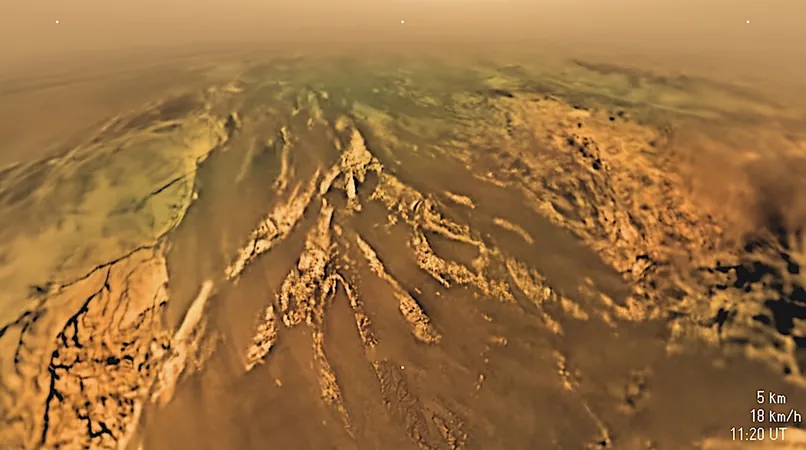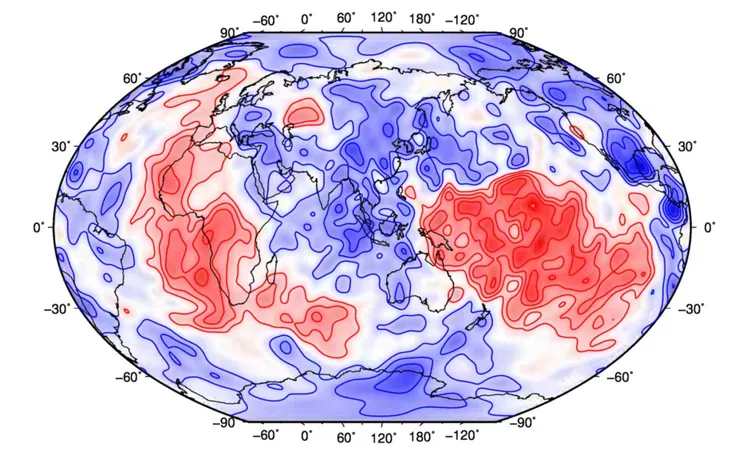
Unlocking the Secrets of Titan: How Thermal Inertia Shapes Its Atmosphere
2025-07-02
Author: Yu
Cracking Titan's Atmospheric Code
Understanding the ins and outs of Titan, Saturn's enigmatic moon, is no simple feat. Its dense atmosphere presents unique challenges, making observations of the planetary boundary layer (PBL)—the atmospheric layer directly influenced by the surface—a daunting task for scientists.
The Mystery of Surface Temperature
Previous research has struggled to provide consistent estimates of Titan's surface temperature, a key factor in revealing how the PBL behaves. This inconsistency often stems from a lack of solid grounding in the surface energy balance framework, leaving many questions unanswered.
A Groundbreaking Study
In a groundbreaking new study, researchers have devised a theoretical framework and utilized a state-of-the-art three-dimensional dry general circulation model (GCM) to explore how thermal inertia—essentially, how materials store and release heat—affects both surface energy balance and temperature fluctuations through day-night cycles and across seasons.
Day vs. Night: The Thermal Inertia Effect
On a day-to-night scale, surfaces with lower thermal inertia show dramatic temperature swings, along with increased sensible heat flux due to ineffective subsurface heat conduction. This means that during the day, these areas heat up quickly but cool down just as fast.
Snowy Seasons: A Different Story
However, when observing seasonal changes, the relationship to thermal inertia becomes less pronounced. Here, atmospheric effects dominate, overshadowing subsurface conduction. This results in PBL depths varying from hundreds to over 1,000 meters during daily cycles, while seasonal peaks can soar between 2,000 and 3,000 meters.
Peering Back at Huygens
These findings align with previous observations from the Huygens probe, which provided crucial insights into Titan's PBL structures, capturing the intricacies of its atmospheric dynamics.
Winds that Tell a Tale
Simulated seasonal winds at the Huygens landing site have matched observed characteristics, including retrograde near-surface winds and wind reversals in the lowest kilometers—a reflection of Titan's unique cross-equatorial Hadley circulation.
What Lies Ahead for Dragonfly?
Models predicting conditions at future exploration sites, like the Dragonfly landing area, forecast shallower thermal PBLs with similar wind patterns, offering hope for uncovering more of Titan's atmospheric quests.
Conclusion: A New Era of Discovery
This pioneering research lays the groundwork for comprehending Titan's surface temperature and boundary layer variability. It provides a cohesive explanation of Titan's PBL behavior, paving the way for future exploration missions that could unlock the moon's many secrets.



 Brasil (PT)
Brasil (PT)
 Canada (EN)
Canada (EN)
 Chile (ES)
Chile (ES)
 Česko (CS)
Česko (CS)
 대한민국 (KO)
대한민국 (KO)
 España (ES)
España (ES)
 France (FR)
France (FR)
 Hong Kong (EN)
Hong Kong (EN)
 Italia (IT)
Italia (IT)
 日本 (JA)
日本 (JA)
 Magyarország (HU)
Magyarország (HU)
 Norge (NO)
Norge (NO)
 Polska (PL)
Polska (PL)
 Schweiz (DE)
Schweiz (DE)
 Singapore (EN)
Singapore (EN)
 Sverige (SV)
Sverige (SV)
 Suomi (FI)
Suomi (FI)
 Türkiye (TR)
Türkiye (TR)
 الإمارات العربية المتحدة (AR)
الإمارات العربية المتحدة (AR)